Toxic Bushfire Haze Blankets Eastern Australia
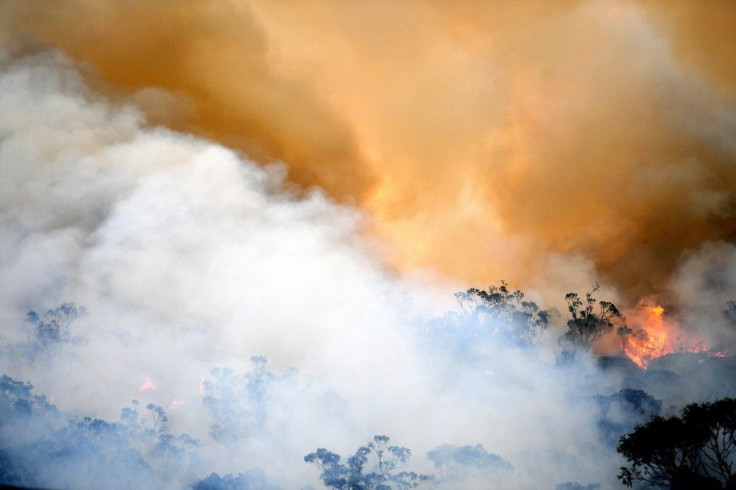
Toxic haze blanketed Sydney Tuesday triggering a chorus of smoke alarms to ring across the city and forcing school children inside, as "severe" weather conditions fuelled deadly bush blazes along Australia's east coast.
Fire engines raced office-to-office in the city centre with sirens blaring, as inland bushfires poured smoke laden with toxic particles into commercial buildings.
Emergency services responded to an "unprecedented" 500 automatic call-outs inside a few hours according to New South Wales Fire and Rescue's Roger Mentha.
A regional fire headquarters miles from the nearest blazes was itself evacuated while throngs of mask-wearing commuters choked their way through thick acrid air and the organisers of a harbour yacht race declared it was unsafe to proceed.
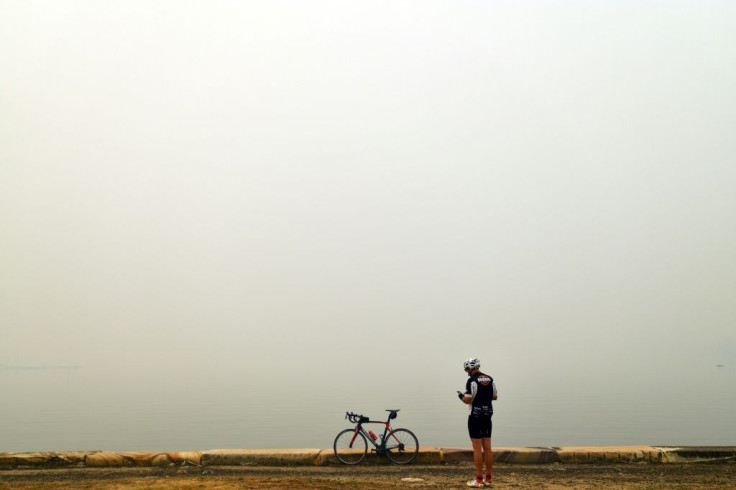
"The smoke from all the fires is just so severe here on the harbour that you just can't see anything, so it's just too dangerous," said spokeswoman Di Pearson of an event that normally foreshadows the famed Sydney-Hobart yacht race. "The vision is just so poor."
Some of the city's commuter ferries were also cancelled "due to thick smoke" and school kids were kept inside at breaktime and sent home early as pollution levels soared far above "hazardous" levels.
For weeks the east of the country has been smothered in smoke as drought and climate-fuelled bushfires have burned. But the scale of the problem on Tuesday shocked even hardened residents.
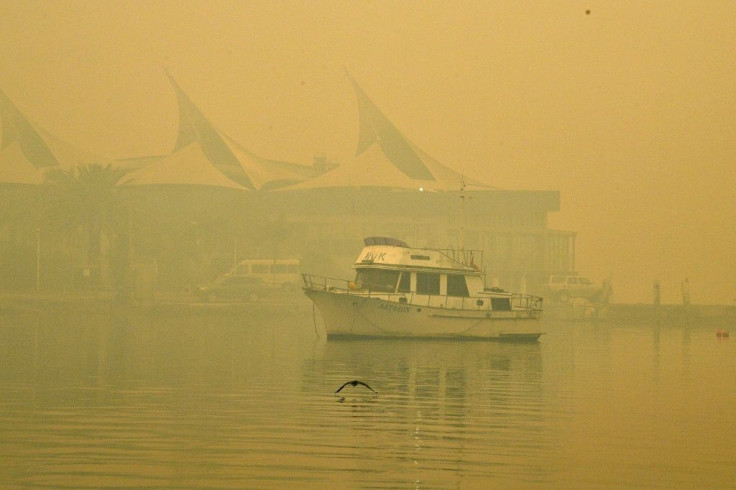
Bruce Baker -- an 82-year-old who lives in Gosford, north of Sydney -- said he was skipping his daily morning walk because of the smoke.
"This is the worst it's been, for sure," he told AFP. "It dries your throat. Even if you're not asthmatic, you feel it."
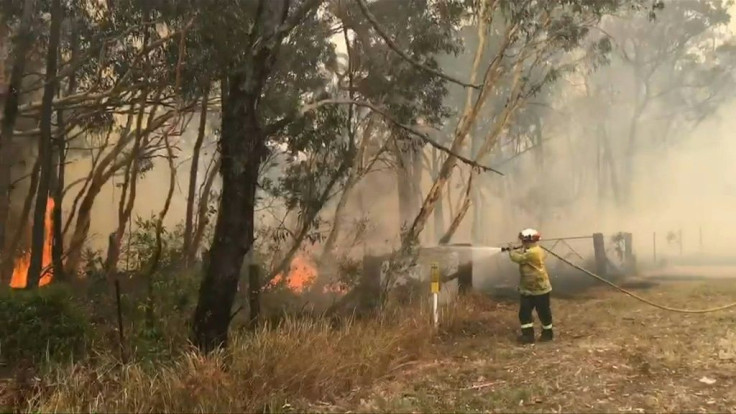
Authorities recommended that the vulnerable cease outdoor activity altogether and that everyone stay inside as much as possible, although one couple braved the toxic air to get married on the waterfront in front of Sydney Harbour Bridge shrouded in smog.
A cricket match between New South Wales and Queensland also went ahead, despite a barely visible ball.
Tuesday had been expected to bring strong winds and high temperatures that made for "severe conditions where embers can be blown ahead of the fire into suburbs and threaten properties."
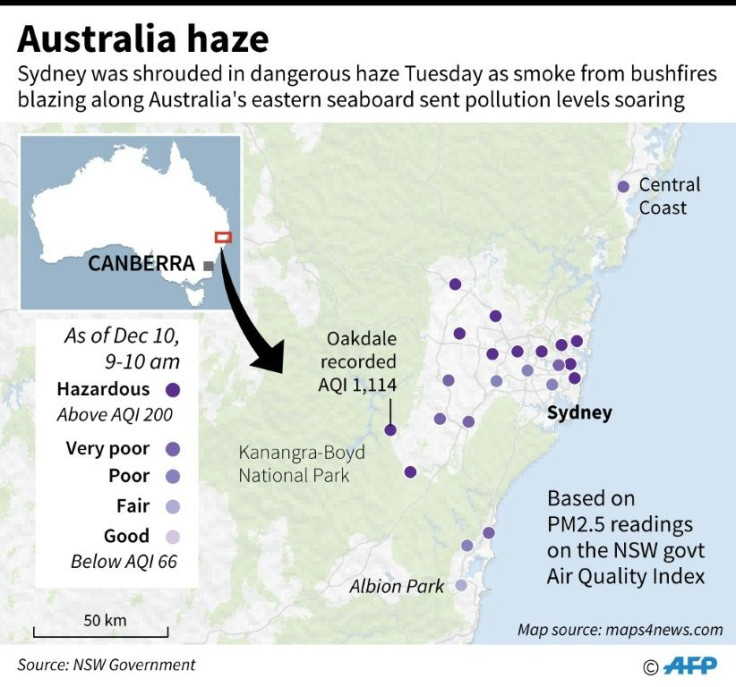
But New South Wales Rural Fire Service said "deteriorating fire conditions have been delayed by a thick blanket of smoke" over the east of the state.
As the day developed there were nearly 100 bushfire incidents in the state of New South Wales alone and dozens more in Queensland.
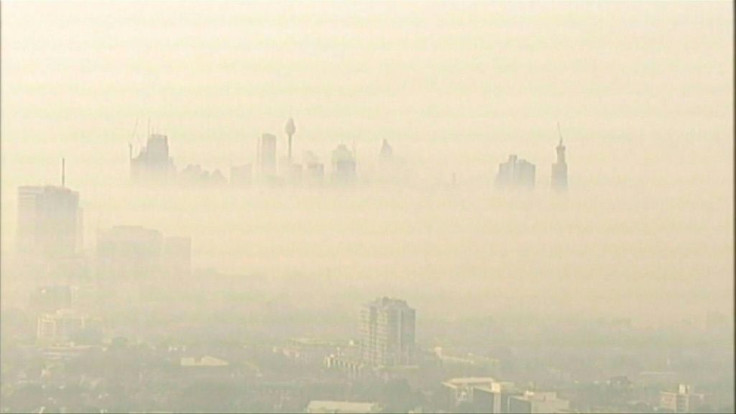
Total fire bans were put in place across much of the east of the country and in large parts of western Australia.
Temperatures in some inland areas eased past 44 degrees Celsius (111 Fahrenheit).
To the northwest of Sydney, several fires already burning for weeks have combined to create a "megafire" that has already destroyed 319,000 hectares (788,000 acres) of land, mostly inside national parks.
Prime Minister Scott Morrison -- who for weeks has not commented on the smoke haze -- defended his government's handling of the fires and said there were no plans to professionalise the countryside's largely volunteer force.
"Our policy is sensible when it comes to addressing and taking action on climate change. Our actions on climate change are getting the results they're intended to get," he said.
Morrison's conservative coalition has been criticised by former fire chiefs for failing to heed warnings about climate change.
The crisis has been propelled by a prolonged drought that has made vegetation tinder dry.
The Bureau of Meteorology has reported that Australia experienced its driest November on record this year.
The "big dry" has left farmers desperate and small towns facing the prospect of running out of water completely.
A swathe of the east of the country has seen "rainfall deficiencies" since early 2017 -- almost three years.
Firefighters south of Brisbane recently reported 1,000 litres of water were stolen from tanks at their station.
Amid the shortage, Tuesday also saw the toughest water restrictions in a decade being introduced for Sydney -- with curbs on everything from hosepipe use to washing cars.
© Copyright AFP 2024. All rights reserved.





















